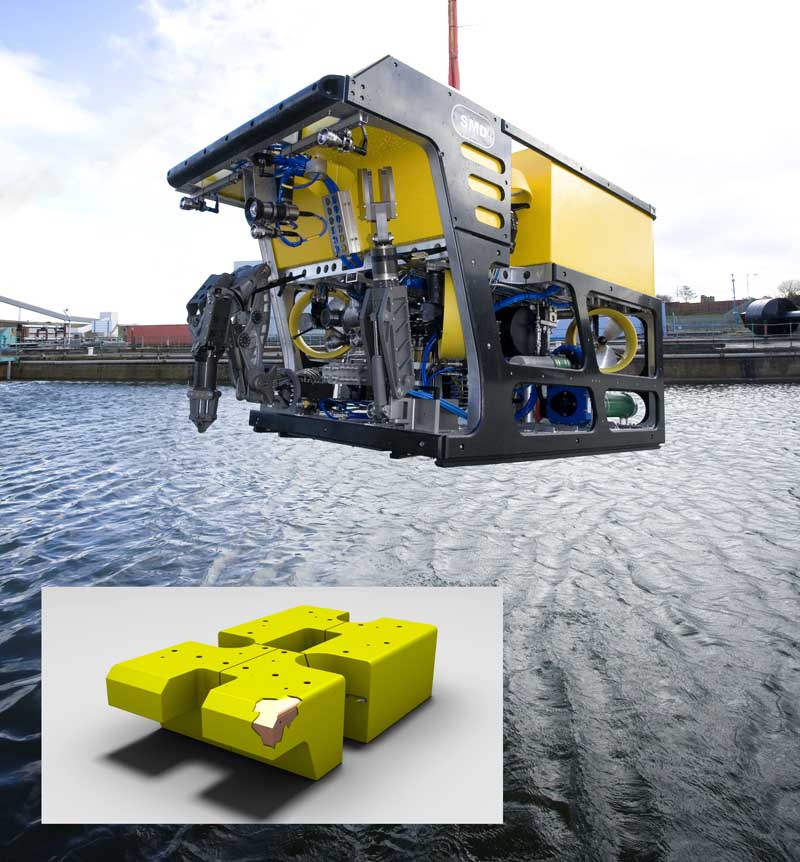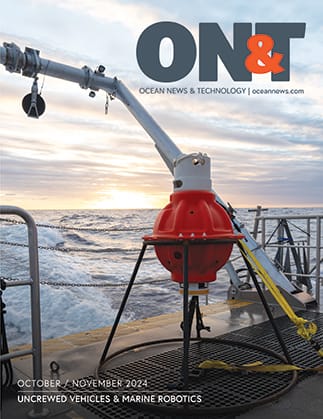Trelleborg Enhances Buoyancy
Offering to Meet Growing Market Demand
In response to increased industry demand for more reliable and high performance buoyancy solutions, Trelleborg’s offshore operation has streamlined its buoyancy manufacturing processes to optimize costs while increasing manufacturing performance and efficiency.

The company has consolidated two of its manufacturing facilities in Boston, Massachusetts, U.S. — where its syntactic foam with micro-balloons are manufactured — reducing its carbon footprint and bringing the material manufacture and transportation of its buoyancy all under one roof. In addition, Trelleborg has developed a new material solution that will minimize manufacturing and processing costs. Experts will be on stand at Underwater Intervention to demonstrate the new advances to visitors.
Bob Kelly, General Manager of Trelleborg’s offshore operation in Boston, says, “The offshore industry is continuously developing, so it is vital that we always challenge and work to enhance our products and our processes to the highest standards.”
“By consolidating two manufacturing facilities, we now offer the most complete modular process for production of buoyancy in the U.S., from raw material to finished product. We’ve also grown our personnel on the shop floor by approximately 15% through local labor. As a result of these developments, we increased our output levels and reduced our lead times.”
Among its subsea offerings, Trelleborg’s offshore operation manufactures a range of high performance, low density syntactic foam solutions for deep sea buoyancy applications. These composite foams provide ultra-low densities through the selection of only the highest specification hollow glass microspheres. These are combined within a rigid, high strength resin system. The syntactic foam is typically cast into blocks and then used to prepare large buoyancy modules that can be readily shaped to suit specific applications.
Many high-end vehicle buoyancy packages are made by constructing small blocks, gluing them together and then machining them, which is a time-consuming and expensive process. However, Trelleborg has developed a new method that produces finished modular geometry to optimize processing costs and lead times.
Kelly continues, “We are constantly striving to advance our microsphere specifications in order to gain a higher strength-toweight ratio within our buoyancy systems. We do this by manipulating our micro-particle manufacturing techniques to ensure that we are able to get the exact ratio required. We specialize at the raw material level by manufacturing our own glass microspheres — Ecospheres® — and put them through stringent, high pressure testing in-house.”
Trelleborg’s latest business developments mean that the company can deliver advanced buoyancy solutions within shorter lead times, helping to keep projects on time and budget. The company’s specialist and technical experts provide guidance on choosing the best product for individual applications. Similarly, Trelleborg provides complete manufacturing transparency as it controls the construction of remotely operated vehicle (ROV) and autonomous underwater vehicle (AUV) buoyancy solutions from the raw microspheres through to the coatings of finished buoyancy solutions.
Bob Kelly will discuss the latest advancements in buoyancy technology in his presentation at Underwater Intervention. To find out more about these products, Trelleborg representatives will be at the show to answer any questions. Alternatively, visit www.trelleborg.com/aem.

